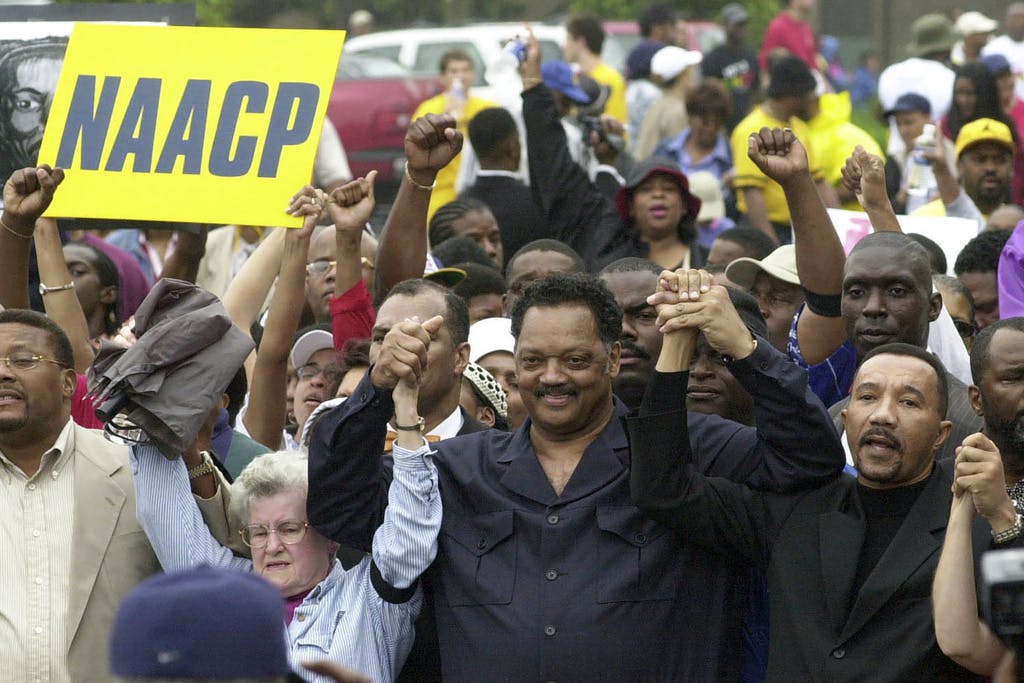Danger for Democrats as Minority Voters Trending Republican
The shift is pronounced among both Blacks and Hispanics, men and women, college graduates and non-college graduates.

Are non-white voters really moving away from the Democratic Party? To partisan Democrats confronting this question on Twitter — sorry, X — it seems preposterous that the party of President Trump, whom they routinely call a racist, could be gaining support from Blacks, Hispanics, and Asians.
Yet the evidence for eroding non-white support for Democrats is strong. The New York Times analyst, Nate Cohn, who back in June 2016 was the first to identify Mr. Trump’s appeal to previously Democratic-voting white non-college graduates, noted earlier this month that President Biden was carrying just 53 percent of non-whites in the 2022-2023 New York Times and Siena College polls — far less than the 70 percent plus he was winning among these voters in November 2020.
The drop is pronounced among both Blacks and Hispanics, men and women, college graduates and non-college graduates. It’s concentrated among non-whites younger than age 45, suggesting a long-range problem for Democrats. That’s in line with the thesis of Republican consultant Patrick Ruffini in his forthcoming book, “Party of the People,” which depicts an emerging “multiracial populist” Republican Party.
To the many liberals shrieking that such a trend is impossible, Mr. Cohn responded by pointing out that Mr. Biden is polling below other Democrats, and below his own 2020 numbers, at this point in the electoral cycle.
Evidently, as the Washington Post’s libertarian-leaning columnist Megan McArdle writes, “many folks just can’t emotionally grasp the possibility of a Democratic party that isn’t mostly a coalition of working class/organized labor/nonwhite voters, with affluent liberals a small, if influential, sideshow.” Similarly, my Washington Examiner colleague, Timothy Carney, describes the resistance of “economic liberals” to recognize corporate executives’ self-acknowledged trend toward Democrats.
The picture of rich businessmen on one side of the partisan divide and blistered-handed working men on the other may be familiar to writers born in the 1970s, like Ms. McArdle and Mr. Carney, and it certainly was to one growing up, as I did, in Big Three- and UAW-dominated Michigan in the 1950s. It warms many a liberal heart to see oneself as the unselfish backer of the toiling masses.
Yet this economic partisan divide was just one of several phases, as I argued in my 2017 book “How America’s Political Parties Change (and How They Don’t),” most of which were based on demographics — geography, ethnicity, race, region, religion — more than economics.
A common pattern is that as one demographic group moves toward one party, another group with different views moves toward the other. What attracts one group repels another. Sometimes that takes a while. In a historic perspective, the question leading off this column might better be: Are non-white voters finally moving away from the Democratic Party?
After all, it’s been 59 years since Senator Goldwater voted against the Civil Rights Act of 1964 when Black people started voting near-unanimously Democratic. That’s just a little less than the 70 years after Abraham Lincoln pushed through the 13th Amendment when Black people near-unanimously supported Republicans.
Members of demographic groups stop voting near-unanimously when old issues that united them fade and new issues that split them arise. New issues that have been shifting the party allegiances of whites for some time may be swaying non-whites as well.
It’s widely understood now, as I wrote at the time, that white non-college graduates outside a million-plus metro areas who had voted twice for President Obama switched to Mr. Trump in 2016 in numbers enough to switch the electoral votes of Pennsylvania, Ohio, Michigan, Wisconsin, and Iowa.
This movement of downscale voters is also evidenced, as University of Virginia Center for Politics analyst Kyle Kondik wrote this month, by a widening divergence in partisan preference between large- and small-population counties.
There was a similar widening divergence between large and small counties, Mr. Kondik writes, in 2000, when downscale Scots-Irish Appalachian whites trending Republican enabled President Bush to carry West Virginia, Tennessee, and Arkansas, which had twice voted Clinton-Gore. Mr. Trump didn’t start the downscale Republican trend; he accelerated it.
Note that those downscale trends were matched by Democratic swings among upscale voters in 2006-2008 and 2018-2020. The process continues as race/ethnicity issues fade in importance for some non-whites, and they move toward Republicans for reasons much like those of non-college whites.
All of which leaves us closely divided between the two parties, with primary polling showing the two unpopular presidents heading toward renomination and with current polling showing Mr. Trump running even with Mr. Biden.
That doesn’t guarantee him victory, Mr. Cohn argues, since the non-white trend toward Republicans could merely reduce Democratic margins in safe Democratic states, while other trends leave Mr. Trump just a little behind in target states, as in 2020. Maybe so. Yet a reliable Democratic — or Republican — majority seems out of reach, as it has been for most of the 169 years they have been competing.
Creators.com

